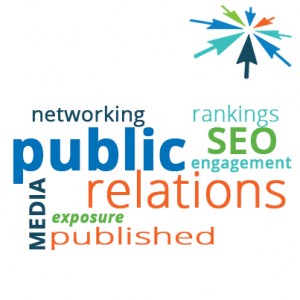PR and SEO can be the best of friends. Here’s how and why!
When many think about Public Relations, the first thing that comes to mind is the press release. While this is a tried, tested and often effective public relations tactic, it has been abused by so many as part of link building schemes that in the long run it may not be the one method you use to build your positioning on popular SERPs (Search Engine Results Pages). But PR should be part of your SEO strategy. Read on to discover why.
Why Should PR Be Part Of Your SEO Strategy?

PR is by its nature an outreach of delivering your interesting and newsworthy content to distribution networks greater than your own. Getting pickup in traditional media like print and television news are always great, as a healthy percentage of the population still relies on these sources and they will often display their stories digitally with associated links to the source.
Here is another way to think about how a public relations strategy will help your search rankings. Search engines want to serve relevant information to their users. Specifically with Google, it must be authentic, timely and topical too. Read our recent post on changes at Google.
If your information is geared toward engaging, informing and helping the end reader, then your information has a better chance of being presented in the search results under that specific topic. When you have other industry authorities (journalists, specialists, etc) talking about your business or product and presenting an associated link back to your site, then the search engines are going to start to see a relation between what other authorities are saying about you and your website. You are becoming the authority.
How Do You Get Your Story Out There?
Thinking back to the beginning of this article, using a press release is one method to distributing your information. Where the rubber meets the road is in not randomly throwing your information to every editor out there. Build a relationship with your targeted journalists or publications. Find them on social media and read what they are talking about and engage with their articles where appropriate. The more you get to know them and can tailor your “pitch” to the needs of their reader, the better chance you have at getting your story picked up and ultimately giving you the distribution you are looking for. The basics still apply here too, be sure to include a relevant headline and include images to make it easy for the editor to easily run with your article.
If you are looking for opportunities to do a guest post on a topical blog, make it easy for the owner of that site to say yes. Give them two or three ideas to choose from and let them know that you want this to be easy for them. Like any sales pitch, try not to lead with what you need, rather lead with how you can help them. You scratch their back and they are more likely to scratch yours back.
PR Bonuses
It’s pretty easy to find yourself down the proverbial bunny hole and get too focused on every nuance and detail of how your PR strategy can help your SEO. Sometimes it’s nice to have that little tag on your website, mention in social media or a feature in your company email newsletter, exclaiming to the world that “XYZ Lawnmowers was featured in Lawnmower Monthly”. It’s good to talk about good press and that in turn provides more content for you to share to your existing and soon to be clients.
Another bonus to putting some energy into developing your public relations strategy, is that you will build a network of media contacts that you can engage with time and again. By understanding their needs, and them understanding what you can provide, when you do send an email or press release, they are more likely to open, read and engage with you. See, timely and relevant content works for editors too.
How Do You Know If PR Is Helping?
The days of press clippings of published stories are not enough anymore. Getting featured in a publication can be very helpful toward increasing your brand awareness, and clippings are nice to show to investors or employers, but to really measure effectiveness of your PR efforts you must look to your analytics.
If there is one item that you can do to measure your PR campaign effectiveness, use the Google Campaign URL Builder to set up trackable URL’s where you will be able to segment the referral traffic from press releases and guest blogging posts back to your site. (Still confused? Prateek Agarwal wrote ‘A Complete Guide to the New Google URL Builder‘ to help out – thanks, Prateek!) Combined with measuring your referral traffic to a specific campaign/segment and you will be able to see pretty soon if this strategy is delivering the viewers and conversions you are looking for.